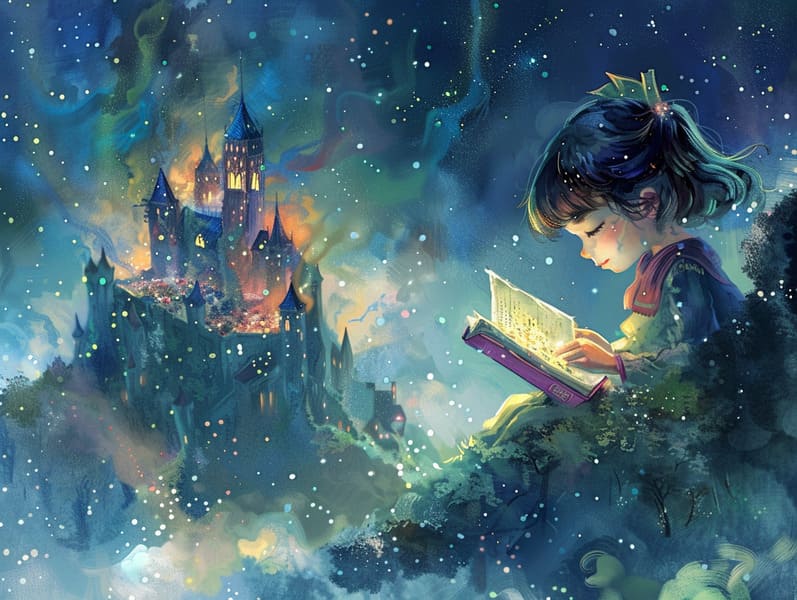The Dawn of Traditional Fairy Tales and the Consistent Delight.
The Dawn of Traditional Fairy Tales and the Consistent Delight.
Blog Article

Legendary fairy tales have deep roots. These tales have been transmitted from one generation to the next ages before they were ever transcribed. They were born from a variety of civilizations, including Asian traditions. They were initially conveyed among older generations, often carrying themes and messages related to the societal norms and beliefs of the time.
The famous Grimm duo, Jacob and Wilhelm, were among the first to compile and release many of these beloved stories. Their published works, "Grimm's Children's Stories," included narratives like "The Little Glass Slipper," "Hansel and Gretel," and "Schneewittchen," which have since become cornerstones in the world of classic fairy tales. Similarly, the Danish author's enchanting tales, such as "The Mermaid," and "The Duckling's Story," have touched hearts worldwide, solidifying their place in the pantheon of treasured fairy tales.
Despite their historical roots, classic fairy tales remain as impactful as ever, especially as children's night stories. These whimsical stories are now available in diverse formats, including vibrantly illustrated books, delightful animations, and online storybooks.
Their ongoing significance can be credited to several captivating elements:
Moral Lessons: Old fairy tales often impart important moral lessons. Narratives like "The Wolf and the Liar" teach the merit of truthfulness, while "The Story of the Tortoise and the Hare" illustrate the traits of determination and unpretentiousness. These stories offer the young clear distinctions between ethical and unethical, building their moral compass in a tender yet impactful way.
Sympathy and Perception: Fairy tales frequently involve personalities facing difficulties and adversities, provoking listeners to understand with their struggles and celebrate their triumphs. For instance, "The Story of Beauty and the Beast" highlights the benefit of looking past the exterior to know the true essence of a character, nurturing warmth and comprehension.
Cultural Awareness: Many classic fairy tales are deeply ingrained in the cultural contexts from which they came. Learning from these tales can provide informative snapshots into different historical contexts, developing a sense of cultural appreciation and awareness.
Fantasy and Imagination: The whimsical elements in traditional fairy tales—magical spells—inspire children’s fantasy worlds. These tales guide readers to extraordinary realms, triggering fantastical thinking and a sense of marvel that lasts a lifetime.
Timeless fairy tales are not only captivating but also illuminating. They serve as delightful tools in cultivating various brain and heart skills in the young. When timeless fairy tales are spoken, they promote verbal skills by presenting new terms and meanings and complicated sentence structures. This practice also develops listening abilities and mindfulness, as kids focus on every detail, looking forward to see what happens next.
Furthermore, discussing the themes and characters of timeless fairy tales can sharpen logical thinking and intellectual skills. Young readers are educated to detect patterns, predict happenings, and catch on to cause and effect. These deliberations also ease young ones verbalize their thoughts and feelings, fostering their emotional intelligence.
In today’s technological era, the abundance of online fairy tales has made these stories more reachable than ever. Online platforms and digital apps supply huge assortments of old fairy tales that can be looked at or heard anytime, anywhere. Fairy tales read out loud are particularly common, offering an charming way for kids to engage click here with these magical stories. Read-aloud books and read-to-me videos lead characters and settings to life, often paired with enchanting music and songs that intensify the storytelling journey.
The timeless appeal of ancient fairy tales lies in their ability to adjust to new eras while sustaining their central values. Contemporary reinterpretations of these stories often include more representative characters and modern settings, making them understandable to today’s audience. However, the underlying themes of fortitude, benevolence, and impartiality remain unchanged, continuing to reach readers of all ages.
Ancient fairy tales also offer a sense of coziness and comprehensibility. They yield a neat narrative with a unmistakable beginning, middle, and end, often drawing to a close with the settlement of conflicts and the triumph of goodness over badness. This reliability can be relieving for the young, granting a sense of sturdiness in an ever-changing world.
Traditional fairy tales continue to spellbind and coach new generations, maintaining their grandeur and relevance in modern society. As children's bedtime stories, they bestow a perfect blend of charm and enlightenment, promoting moral values, empathy, and creativity. The proliferation of digital fairy tales and the well-liked nature of fairy tales narrated certify that these classic narratives remain reachable to new generations.
By guarding and distributing these stories, we continue to pay tribute to the rich tapestry of human imagination and cultural heritage. Whether you are browsing a vividly illustrated book, discovering a cyber collection, or listening on an sound book, the allure of children's fairy tales is always within reach. These stories remind us of the unwavering nature of storytelling and its ability to unite us across epochs and places.
If you are viewing a artistically illustrated book, discovering a digital collection, or playing an narrated book, the enchantment of ancient fairy tales is always within reach.
These tales teach us of the steadfast presence of tales and its ability to tie us across time and space, forging a link that captivates and teaches alike.